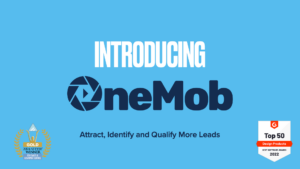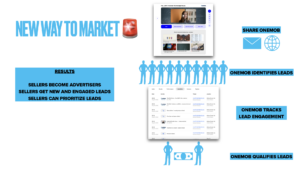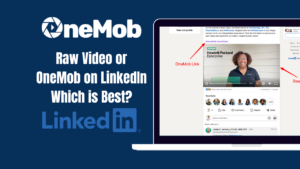Understanding Sales Velocity
Sales Velocity is much more than a fanciful buzzword in the world of sales and marketing – it is a vital metric that gauges the health of your business sales. In essence, it measures the speed at which your opportunities are moving in your sales funnel towards becoming revenue. Think of it as the heartbeat of your sales process, too slow, and you could be missing valuable opportunities, too fast, and you may be burning through leads less efficiently.
There are four crucial components that make up sales velocity: number of opportunities, average deal size, conversion rate, and sales cycle length. Let us unveil these components in a bit more detail.
The Components of Sales Velocity
- Number of Opportunities: This refers to the number of potential deals you have in your sales pipeline at any given time.
- Average Deal Size: Also known as average selling price, this indicates the average revenue that you expect to generate from each deal.
- Conversion Rate: Sometimes referred to as the win rate, it is the probability of converting a lead into a customer.
- Sales Cycle Length: This is the average amount of time it takes a lead to move through all stages of your sales process to become a customer.
These four components are much like the gears in a well-oiled machine. Each gear needs to function correctly for the machine to work smoothly, and the same is true for sales velocity. An imbalance in one factor could slow down your sales, thus affecting the overall business health.
A Peek into Lesser-Known Facts
While common knowledge might encourage you to speed up your sales cycle for increased sales velocity, a study by Gong.io suggests that the optimal sales cycle length is neither too short nor too long but balanced. Surprisingly, the velocity sweet spot is to be found in a longer cycle. Astonishing, isn’t it? But here lies the beauty of understanding sales velocity – it lets you uncover novel insights hidden beneath plain sight and challenge the status quo for unprecedented growth.
The Role of a Sales Velocity Calculator
If crafting a sales strategy was like sailing a ship, then the sales velocity calculator would be the compass guiding your way. With the ability to measure and track your sales velocity, you can identify bottlenecks, analyze the efficiency of your process, plan strategic adjustments, and most importantly, predict your future sales. Various tools, like OneMob, provide this functionality, transforming data into actionable insights, thereby addressing the critical aspects of an SDR’s or seller’s work life.
In the dynamic world of sales, a Sales Velocity Calculator plays a significant role in enhancing sales strategy. From gauging business performance to predicting future outcomes, the tool proves to be a boon for Sales Development Representatives, Sellers, and Account Managers.
So, how does a Sales Velocity Calculator exactly work? It integrates four key variables: the number of opportunities, average deal value, conversion rate, and sales cycle length. Incorporating real-time data, this sophisticated tool calculates your Sales Velocity, painting a clear picture of your profits, losses, and overall sales efficacy. It assists in forecasting by predicting the potential revenues based on your current sales pace. The advanced algorithm takes into account fluctuations in factors such as market trends, customer preferences, and competitor strategies, making the predictions more accurate. A little-known fact is that this tool also calculates ‘what-if’ scenarios, acting as a sort of business crystal ball, enabling strategic decision-making.
Indeed, the advantages of using a Sales Velocity Calculator are manifold. The tool facilitates better resource allocation by pinpointing areas that yield maximum revenue. It unearths underlying sales patterns, enabling you to fine-tune your strategies. Moreover, it provides an insightful snapshot of your pipeline health, helping you identify bottlenecks and take preventive measures, consequently accelerating the sales process.
Curiosity – The Lesser-known Side of Sales Velocity Calculators
A lesser-known detail about the Sales Velocity Calculator is that it traces its origins to a mathematical model called Little’s Law, which was initially developed to solve problems in queue theory. In the sales context, this law is employed to interconnect variables such as lead volume, conversion rate, and cycle duration, leading to the parameter defined as ‘Sales Velocity.’ Another interesting fact – leading corporations in the field of e-commerce, manufacturing, and pharmaceutical leverage the power of Sales Velocity Calculators to chart out their sales roadmap, a testament to the tool’s prowess.
Why OneMob?
OneMob’s offering goes beyond just providing a tool. It equips SDRs and sellers with an engaging platform that not only calculates sales velocity but also fosters customer engagement through its innovative features such as no-code microsites and personalized video messaging capabilities. Connecting OneMob to your mail service allows for batch emailing, keeping the communication personal and optimized to generate desired outcomes. Curious? Why not sign up for a tryout and experience how OneMob can revolutionize your sales strategy!
Improving Sales Velocity for Business Growth
Understanding the calculations and implications of a sales velocity calculator, as discussed in the previous section, paves the road towards improving it. The sales velocity metric not only stands as an indicator of your sales efficiency but also offers insights into individual elements that can be enhanced to streamline the overall sales process. It’s not just about the speed; it’s also about how much, how often, and at what price.
Analyzing Factors That Can Impact Sales Velocity
The four components of sales velocity — number of opportunities, average deal size, win rate, and length of sales cycle — all have a tremendous impact on your sales velocity. Therefore, a closer analysis of these variables can uncover growth areas that can significantly optimize your sales velocity. For instance, if your sales cycle is exceptionally long, you might want to delve deeper into the stages where deals get stuck and figure out how to fix them. If your win rates are low, it’s indication to reflect upon your selling techniques or the quality of your opportunities.
Tips to Enhance Individual Components of Sales Velocity
- Number of Opportunities: Investing in high-quality lead generation and refining the qualifying process can expand your pipeline with promising opportunities.
- Average Deal Size: Up-selling and cross-selling techniques, product bundling and creative pricing strategies can increase your average deal size.
- Win Rate: Boosting your win rate implies improving sales rep training, utilizing sales enablement tools, and fine-tuning your sales process.
- Length of Sales Cycle: Implementing a more efficient follow-up strategy and leveraging a customer relationship management (CRM) system can aid in shortening the sales cycle.
Best Practices to Increase Your Sales Velocity for Overall Business Growth
Improving sales velocity goes beyond just enhancing its individual components. The real mastery lies in aligning these elements in such a way that the effect of progress in one area multiplies the impact on the overall sales velocity. OneMob serves as an effective tool in this regard, providing a comprehensive solution to streamline your sales process, monitor sales metrics and enhance your outreach with customizable, engaging videos and microsites.
Frequently Asked Questions
How can OneMob aid in increasing sales velocity?
OneMob offers easily customizable microsites that boost customer engagement and sales representative efficiency, leading to more opportunities and a shorter sales cycle.
How can I increase opportunities in my sales pipeline?
Invest in quality lead generation and refine your sales qualification process to ensure your pipeline is filled with high-quality, sales-ready leads.
In conclusion, a meticulous examination of your sales velocity and its key components can highlight areas for enhancement. By implementing the right strategies and employing the appropriate tools like OneMob, boosting the sales velocity metric to drive business growth becomes a tangible reality.







